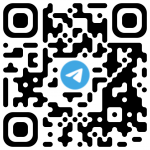在网上买了Cambridge Enlish教材,剑桥雅思阅读Alternative Medicine in Australia 翻译,开始看Cambridge Enlish这些教材时好多单词不认识,只好在手机上安装app一个一个单词的查,笔者开始看这个教材时没有按照顺序看,拿着剑桥雅思4书就开始了。
但看到阅读时,一是太长,二是好多单词不认识,于是为了加深理解,将教材自已用 google 翻译出来放这,帮助有需要的人。
提示:google 翻译[cn域名]2022年10月已经不能使用,如果你有上网工具,可以使用com域名的google翻译,https://translate.google.com/

剑雅真题分为学术类和培训类,购买时需要分清你需要书的类型。
学术类购买地址:
培训类购买地址:
剑桥雅思4 Alternative Medicine in Australia 翻译-Test 2-Passage 2
Alternative Medicine in Australia 翻译
剑桥雅思4 Alternative Medicine in Australia 翻译-Test 2-Passage 2 第二篇文章介绍了澳大利亚替代医疗的发展状况。文章正文分为六个自然段,基本按照时间顺序进行,逻辑结构还是很清晰的。先说了澳大利亚人不愿意接受替代医疗,然后说明病人和医生态度的逐渐改变,最后又展望了发展前景。以下是剑桥雅思4 Alternative Medicine in Australia 翻译-Test 2-Passage 2中文翻译:
The first students to study alternative medicine at university level in Australia began their four-year, full-time course at the University of Technology, Sydney, in early 1994. Their course covered, among other therapies, acupuncture. The theory they learnt is based on the traditional Chinese explanation of this ancient healing art: that it can regulate the flow of ‘Qi’ or energy through pathways in the body. This course reflects how far some alternative therapies have come in their struggle for acceptance by the medical establishment.
澳大利亚第一批在大学学习替代医学的学生于 1994 年初在悉尼科技大学开始了为期四年的全日制课程。他们的课程包括针灸等疗法。 他们学到的理论是基于对这种古老治疗艺术的中国传统解释:它可以通过身体的通路(经络)调节“气”或能量的流动。 本课程反映了一些替代疗法在争取医疗机构接受方面取得了多大的进展。

Australia has been unusual in the Western world in having a very conservative attitude to natural or alternative therapies, according to Dr Paul Laver, a lecturer in Public Health at the University of Sydney. ‘We’ve had a tradition of doctors being fairly powerful and I guess they are pretty loath to allow any pretenders to their position to come into it.’ In many other industrialised countries, orthodox and alternative medicine have worked ‘hand in glove’ for years. In Europe, only orthodox doctors can prescribe herbal medicine. In Germany, plant remedies account for 10% of the national turnover of pharmaceuticals. Americans made more visits to alternative therapists than to orthodox doctors in 1990, and each year they spend about $US1 2 billion on therapies that have not been scientifically tested.
悉尼大学公共卫生讲师 Paul Laver 博士表示,澳大利亚对自然或者替代疗法抱有十分保守的态度,这在西方世界很不寻常。我们已有医生的传统相当强大,我想他们很不愿意让任何觊觎他们地位的东西进入其行业。在许多其他工业化国家,正统疗法和替代意料已经合作了很多年。在欧洲,只有正统医生可以开草药。在德国,植物疗法占全国药品营业额的10%。1990年,美国人对替代治疗师的访问次数比对正统医生的访问次数还多。每年,他们在未经科学检验的治疗上花费约12亿美元。
Disenchantment with orthodox medicine has seen the popularity of alternative therapies in Australia climb steadily during the past 20 years. In a 1983 national health survey, 1.9% of people said they had contacted a chiropractor, naturopath, osteopath, acupuncturist or herbalist in the two weeks prior to the survey. By 1990, this figure had risen to 2.6% of the population. The 550,000 consultations with alternative therapists reported in the 1990 survey represented about an eighth of the total number of consultations with medically qualified personnel covered by the survey, according to Dr Laver and colleagues writing in the Australian Journal of Public Health in 1993. ‘A better educated and less accepting public has become disillusioned with the experts in general, and increasingly skeptical about science and empirically based knowledge,’ they said. ‘The high standing of professionals, including doctors, has been eroded as a consequence.’
在过去的 20 年里,对正统医学的清醒态度使替代疗法在澳大利亚的受欢迎程度稳步攀升。 在 1983 年的一项全国健康调查中,1.9% 的人表示他们在调查前两周曾联系过按摩师、自然疗法师、整骨师、针灸师或草药师(中医)。 到 1990 年,这个数字上升到人口的 2.6%。 根据 Laver 博士及其同事 1993 年在《澳大利亚公共卫生杂志》上的文章,1990 年调查报告的与替代治疗师进行的 550,000 次咨询约占调查所涵盖的医疗合格人员咨询总数的八分之一。 他们说,受过教育且接受度较低的公众对专家普遍感到失望,并对科学和基于经验的知识越来越怀疑。 “因此,包括医生在内的专业人士的崇高地位受到侵蚀。”
Rather than resisting or criticising this trend, increasing numbers of Australian doctors, particularly younger ones, are forming group practices with alternative therapists or taking courses themselves, particularly in acupuncture and herbalism. Part of the incentive was financial, Dr Laver said. ‘The bottom line is that most general practitioners are business people. If they see potential clientele going elsewhere, they might want to be able to offer a similar service.’
越来越多的澳大利亚医生,尤其是年轻医生,并没有抵制或批评这一趋势,而是与替代治疗师组成小组实践或自己参加课程,特别是针灸和草药学。 Laver 博士说,部分激励措施是经济上的。 “最重要的是,大多数全科医生都是商人。 如果他们看到潜在客户去别处,他们可能希望能够提供类似的服务。
In 1993, Dr Laver and his colleagues published a survey of 289 Sydney people who attended eight alternative therapists’ practices in Sydney. These practices offered a wide range of alternative therapies from 2 5 therapists. Those surveyed had experienced chronic illnesses, for which orthodox medicine had been able to provide little relief. They commented that they liked the holistic approach of their alternative therapists and the friendly, concerned and detailed attention they had received. The cold, impersonal manner of orthodox doctors featured in the survey. An increasing exodus from their clinics, coupled with this and a number of other relevant surveys carried out in Australia, all pointing to orthodox doctors’ inadequacies, have led mainstream doctors themselves to begin to admit they could learn from the personal style of alternative therapists. Dr Patrick Store, President of the Royal College of General Practitioners, concurs that orthodox doctors could learn a lot about bedside manner(对待病人的态度) and advising patients on preventative health from alternative therapists.
1993 年,Laver 博士和他的同事发表了一项针对 289 名悉尼人的调查,这些人在悉尼参加了8个替代治疗师的实践。这些实践提供了来自 2 5 位治疗师的广泛替代疗法。接受调查的人患有慢性疾病,而正统医学对此几乎无济于事。他们评论说他们喜欢他们的替代治疗师的整体方法以及他们得到的友好、关心和详细的关注。正统医生的冷漠、没有人情味的态度在调查中得到体现。越来越多的人离开他们的诊所,再加上在澳大利亚进行的这项调查和其他一些相关调查,都指向正统医生的不足之处,导致主流医生自己开始承认他们可以从替代治疗师的个人风格(行医风格)中学习。皇家全科医师学院院长 Patrick Store 博士同意,正统医生可以从替代治疗师那里学到很多关于对待病人的态度和建议患者预防性健康的知识。
According to the Australian Journal of Public Health, 18% of patients visiting alternative therapists do so because they suffer from musculo-skeletal complaints; 12%suffer from digestive problems, which is only 1% more than those suffering from emotional problems. Those suffering from respiratory complaints represent 7% of their patients, and candida sufferers represent an equal percentage. Headache sufferers and those complaining of general ill health represent 6% and 5% of patients respectively, and a further 4% see therapists for general health maintenance.
根据澳大利亚公共卫生杂志,有18%的寻求替代治疗师的患者之所以这样做,是因为他们患有肌肉骨骼疾病;12%患有消化问题,仅比患有情绪问题的人多1%。 患有呼吸系统疾病的患者占患者总数的 7%,念珠菌患者占相同比例。 头痛患者和抱怨一般健康状况不佳的患者分别占患者的 6% 和 5%,另有 4% 的人会去看治疗师进行全面健康呵护。
The survey suggested that complementary medicine is probably a better term than alternative medicine. Alternative medicine appears to be an adjunct, sought in times of disenchantment when conventional medicine seems not to offer the answer.
调查表明,补充医学可能是比替代医学更好的术语。 当传统疗法无法提供答案而人们不再为此痴迷的时候,替代疗法似乎是一种辅助。

剑桥雅思4阅读中文翻译导航
- 剑桥雅思4阅读中文翻译-Test 1-Passage 1
- 剑桥雅思4 What Do Whales Feel 翻译-Test 1-Passage 2
- 剑桥雅思4 Visual Symbols and the Blind 翻译-Test 1-Passage 3
- 剑桥雅思4 Lost for Words 翻译-Test 2-Passage 1
- 剑桥雅思4 Alternative Medicine in Australia 翻译-Test 2-Passage 2
- 剑桥雅思4 Play is a Serious Business 翻译-Test 2-Passage 3
- 剑桥雅思4 Micro-Enterprise Credit for Street Youth 翻译-Test 3-Passage 1
- 剑桥雅思4 volcanoes earth shattering news 翻译-Test 3-Passage 2
- 剑桥雅思4 Obtaining Linguistic Data翻译-Test 3-Passage 3

感兴趣的朋友请收藏本站,剩下的内容本站会持续更新。

【江湖人士】(jhrs.com)原创文章,作者:江小编,如若转载,请注明出处:https://jhrs.com/2022/45264.html
扫码加入电报群,让你获得国外网赚一手信息。
文章标题:剑桥雅思4 Alternative Medicine in Australia 翻译-Test 2-Passage 2
